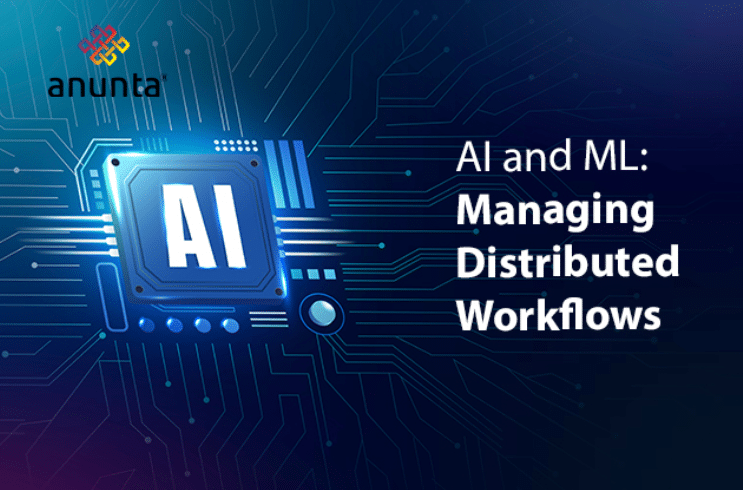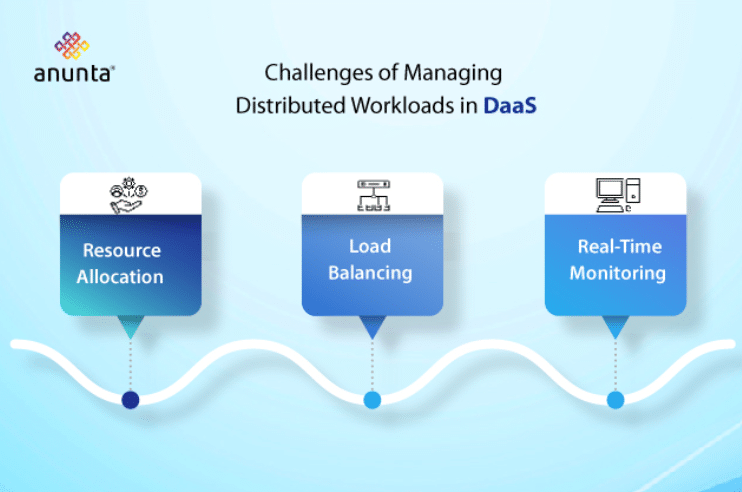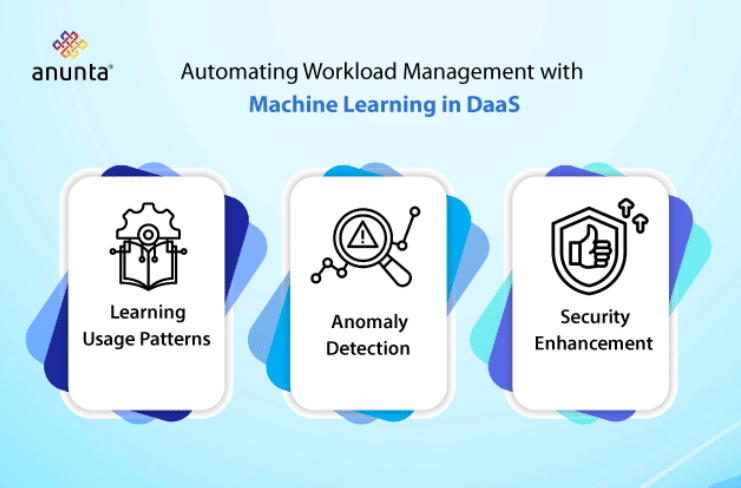
Desktop as a Service (DaaS) has become a critical business tool. It allows employees to access virtual desktops from anywhere, increasing flexibility and productivity. However, managing distributed workloads in a DaaS environment presents numerous challenges, especially as businesses scale. This blog explores how these technologies can revolutionize workload management.
Managing workloads across distributed environments can be a logistical nightmare without the right tools. Here, we will explore the key challenges in DaaS workload management and how AI and ML can help.

Efficiently distributing resources like CPU, storage, and bandwidth is critical to avoid underperformance or unnecessary costs.
Ensuring even workload distribution across servers prevents performance bottlenecks and system overloads, improving the user experience.
Monitoring distributed environments in real-time is challenging, but detecting and resolving issues before they impact users is necessary.

AI can optimize how resources are allocated and managed in DaaS, offering real-time decision-making and improved performance. This section covers how AI enhances workload management.
AI predicts resource demands by analyzing historical data, ensuring that resources are available when needed, without waste.
AI-driven load balancing distributes workloads dynamically, preventing any single resource from becoming a bottleneck.
With AI, systems can detect potential performance issues early and take corrective action before they disrupt service.
ML takes workload management to the next level by automating many tasks that would otherwise require manual intervention. Here, we’ll look at how ML can streamline processes in DaaS.

ML models learn from usage patterns, predict future resource needs, automate scaling, and make workload management more efficient.
ML can detect resource usage and performance anomalies, allowing systems to correct issues automatically improving system reliability.
ML models can analyze data in real time to identify unusual behavior or potential security threats, enhancing the security of distributed workloads.
Did You Know?
Anunta has been recognized in the 2024 Gartner ® Magic Quadrant™ for Desktop as a Service (DaaS) for the second consecutive time.
AI and ML enable systems to scale dynamically and maintain optimal performance in DaaS environments, ensuring users have a seamless experience.
AI and ML automatically scale resources based on demand, ensuring that systems can handle peak workloads without wasting resources during off-peak times.
By constantly monitoring system performance, AI and ML ensure optimal efficiency, adjusting resource usage based on real-time demand.
AI and ML optimize resource allocation and enhance the overall reliability and efficiency of distributed workloads in DaaS environments.
With AI managing resource allocation, businesses can reduce operational costs by avoiding unnecessary resource use and improving overall efficiency.
AI and ML contribute to system reliability by automating troubleshooting and proactive issue resolution, which helps in reducing downtime.
Anunta’s DesktopReady™ is a modern DaaS platform that simplifies cloud desktop management with built-in automation and monitoring. It offers fully managed Windows 10/11 desktops via Azure Virtual Desktop (AVD) or VMware Horizon, hosted on Microsoft Azure. DesktopReady™ ensures security with GDPR, CCNA, PCI, HIPAA, and SOC2 compliance and provides 24/7 support for a seamless distributed workforce experience.
Q: How do AI and ML enhance workload management in DaaS?
A: AI and ML automate resource allocation, load balancing, and performance monitoring, ensuring efficient use of resources, dynamic scaling, and improved system reliability.
Q: What are the main challenges of managing distributed workloads in DaaS
A: The primary challenges include resource allocation, load balancing, and real-time monitoring, crucial to maintaining performance and avoiding system bottlenecks.
Q: How does AI-driven predictive resource allocation work in DaaS?
A: AI analyzes historical usage data to predict resource demand, ensuring resources are available when needed while minimizing waste.
Q: What role does machine learning play in enhancing security in DaaS environments?
A: ML models analyze data in real-time, identifying unusual behaviors or potential security threats to enhance distributed workload security.
Q: How does DesktopReady™ simplify workload management in DaaS?
A: DesktopReady™ provides automated cloud desktop management, monitoring, and 24/7 support, ensuring efficient, secure, and scalable management of distributed workloads.
Research Review with Anunta’s CTO | Jan 14 | 12PM PST/3PM EST